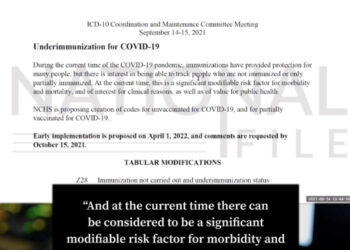Last Updated on January 11, 2020
Harper’s Bazaar came out with a headline which could be many considered strange, titled “When Feminism Is White Supremacy in Heels,” which critiques certain forms of feminism.
There’s a growing trend, specifically on social media, condemning ‘white’ feminism as enabling white supremacy, whiteness, or the unconscious white sub-ideology of the day which must be smashed to inaugurate an era of equality and liberation.
The cure to so-called ‘white feminism’ is often what is termed intersectionality, a more inclusive ideology which extends an olive branch to more downtrodden women of differing ethnic groups, sexual orientations, creeds, and gender identities based on the idea that all marginalized groups should band together.
The article‘s subheading is straight to the point, outlining “from tone policing to whitesplaining, the liberal white women’s feminism is more toxic than they realize.”
The author also explains that they were inspired by the murder of an 18-year-old black girl, Nia Wilson, who was stabbed to death in Oakland last year and the white liberal feminists allegedly milquetoast response.
The author writes:
As we grappled with the realities of Nia’s death, I began to use Instagram to facilitate a discussion and flesh out questions like: How many more black women and girls must die before mainstream media considers it a worthy story to cover? How could they possibly take away her white male murderer so gently in handcuffs, while black men are thrown to the ground during traffic stops? Why aren’t the recorded wails of her mother and the tears of her father enough for the whole world to be demanding justice right now? And where are the voices of all my white feminist friends when a black woman had been tragically murdered?
Almost immediately, at my request, hundreds of commenters asked the white women who they saw as friends and leaders to use their platform to highlight the tragedy of Nia’s death with the same outrage of their black feminist allies. And many did—both demanding that justice be served while expressing their disbelief that such a story hadn’t gained national attention in the same way that Laci Peterson’s or JonBenét Ramsey’s had. But there were just as many white women—women whose bios claim titles like “social justice warrior” and “intersectional feminist”—that somehow took this call for solidarity as a personal attack.
As the author commences the article, she attacks the apathy of many feminists who present themselves as allies to her cause, which she believes to be somewhat disingenuous.
“White women who claim titles like ‘intersectional feminist’ somehow took this call for solidarity as a personal attack.”
She injects more anecdotes to further her anti-white-feminist case before dropping “The Toxic White Feminism Playbook,” detailing the tactics employed by white feminists to suppress the plight of women of color:
TONE POLICING
When women of color begin to cry out about their pain, frustration, and utter outrage with the system that is continuing to allow our men to murdered, our babies to be disregarded, and our livelihood to be dismissed, we are often met with white women who tell us perhaps we should “say things a little nicer” if we want to be respected and heard.
SPIRITUAL BYPASSING
The easiest way for white women to skirt around the realities of racism is to just “love and light it away”. When confronted with ways they have offended a marginalized group with their words or actions, they immediately start to demand unity and peace; painting those they harmed as aggressive, mean, or divisive.
WHITE SAVIOR COMPLEX
Many white women insist that there is no way they could be part of the problem because of their extensive resume of what they’ve “done for you people.” Instead of listening to what the women of color are trying to express, they instead whip out the Nice Things I’ve Done For Black People In The Past, which often includes everything from “says hi to the black man next door every single morning” to “saved a black child through adoption and treats them just as nicely as my white children.”
CENTERING
This is the most common of all. White women get so caught up in how they feel in a moment of black women expressing themselves that they completely vacuum the energy, direction, and point of the conversation to themselves and their feelings. They start to explain why race is hard for them to talk about, what they think would be a better solution to the topic at hand, and perhaps what women of color can do to make it more palatable.
The author lists a plan of action to stave off white feminist moves taken from the playbook to continue the cycle of oppression.
At the end of the article, the author says that “Racism is as American as pie” before demanding that white feminists recognize the racism of their country and to pick up their work load.




















